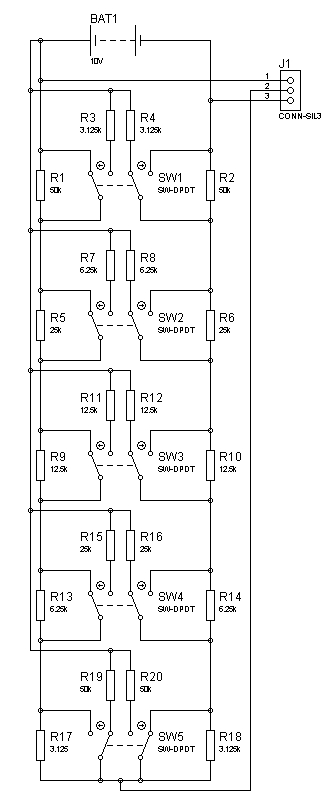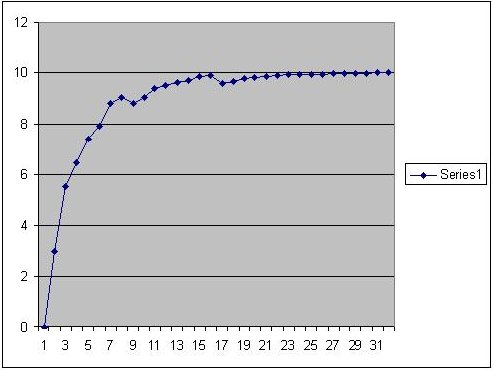Dusty Circuit
Well-known member
Hi
I am attempting to construct an logarithmic potentiometer using relays and resistors. The goal is to use these circuits to control practically anything with a pot and store the setting for later use. I have successfully constructed an linear one using an article in EDN-magazine as a base. However, a logarithmic one turned out to be more difficult. I used the EDN design as a base for this as well but added some resistors in a T-network (?) fashion. This seems to work but i got some "bumps" when i plotted the graph. Does anyone have a suggestion to what's causing this? I have used Rtot/2^n to calculate the values for the resistors.
EDN article
Schematic of the logarithmic pot:

Graph of the result. y: Voltage x: Step (binary)

Best Regards,
Hampus
I am attempting to construct an logarithmic potentiometer using relays and resistors. The goal is to use these circuits to control practically anything with a pot and store the setting for later use. I have successfully constructed an linear one using an article in EDN-magazine as a base. However, a logarithmic one turned out to be more difficult. I used the EDN design as a base for this as well but added some resistors in a T-network (?) fashion. This seems to work but i got some "bumps" when i plotted the graph. Does anyone have a suggestion to what's causing this? I have used Rtot/2^n to calculate the values for the resistors.
EDN article
Schematic of the logarithmic pot:

Graph of the result. y: Voltage x: Step (binary)

Best Regards,
Hampus


